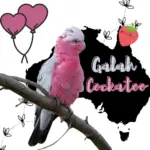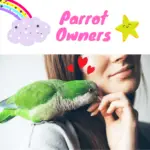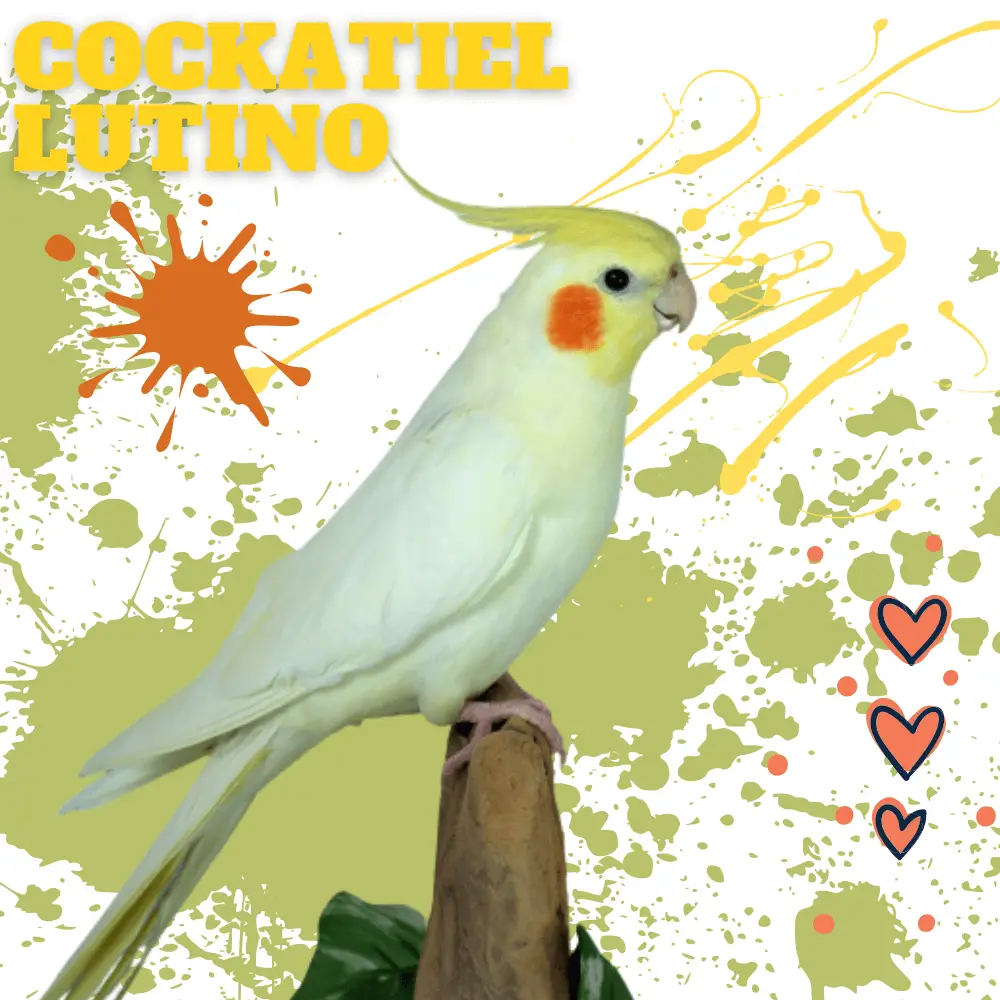
Cockatiel lutino is not uncommon to come across a cockatiel owner. Indeed, more than 50% of people who live with birds own a small cockatiel. After the budgie, it is the most popular bird in captivity.
I would add that the majority of people who have developed a long relationship with parrots started out after having a cockatiel as their first mate. Fortunately, that’s what happened to me!
Ti-Moine arrived at my place in 2000 when he was only 2 weeks old: it was much too young… but at the time I didn’t know anything about birds!
He did not eat on his own, he had almost no feathers, he was not yet standing on his feet and above all, he could not fly!
When I gave Ti-Moine a syringe for the first time, I realized that my life had just changed. I will always be very grateful to him! Today Ti-Moine is his mother’s pride!
What is so exceptional about this little bird? Why do so many people own such a bird? Here’s why
How much do cockatiels cost
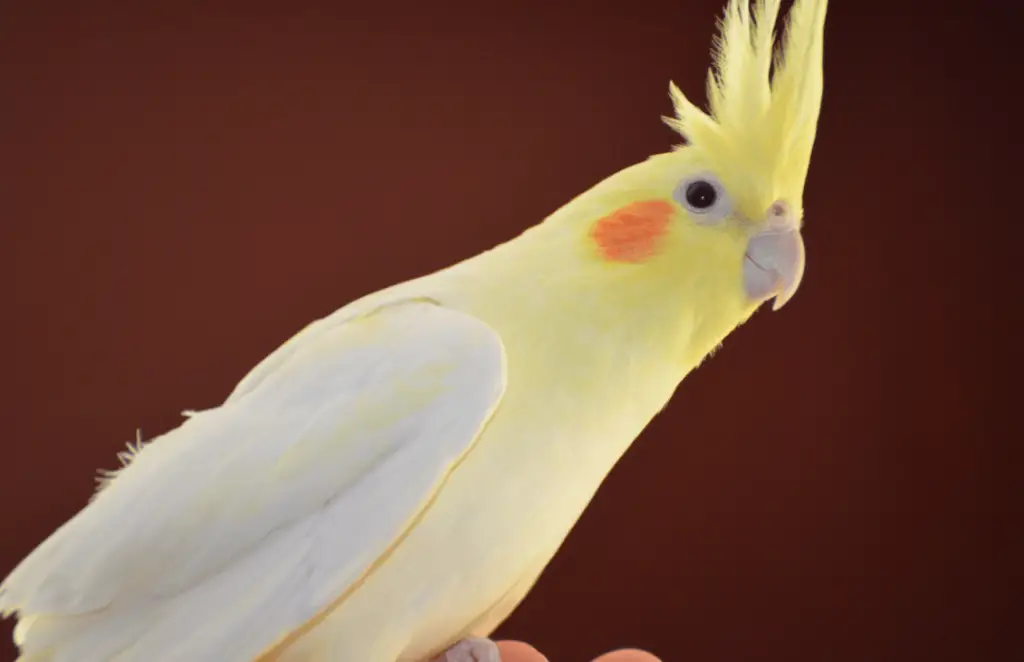
How much does a cockatiel cost
- Lutino Cockatiel: $150 to $250
- Pied Cockatiel: $110 to $170
- Pearl Cockatiel: $150 to $200
- Cinnamon Cockatiel: $130 to $160
Cockatiels sounds
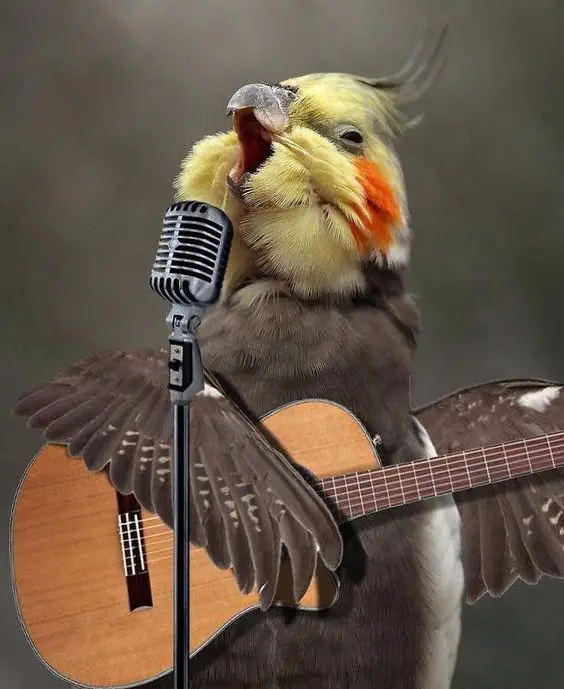
Cockatiels types
- Lutino Cockatiel
- Pied Cockatiel
- Pearl Cockatiel
- Cinnamon Cockatiel
- Cockatiel white face
- yellow cockatiel
Lutino Cockatiels

Behavior and peculiarities
Funny and affectionate, cockatiels are known to adapt easily to all lifestyles. Among parrots, it is always the first on the charts for the funniest species and the most prone to whistling. This personality trait increases the popularity of this species.
He can learn to pronounce a few words, but he will focus on whistling. And no, it is not true that if our parrot hisses, it will never speak! It’s so charming, funny, and interesting to watch him and hear him give us his little act, so don’t hesitate and teach him how to whistle!
The male is more gifted than the female when it comes time to perform, because, with him, it is an innate behavior consisting in seducing his partner and impressing his rivals.
Ti-Moine knows about 6 different melodies, and the most spectacular is that he combined them to compose his own song, a real little Beethoven!
The sounds that cockatiels make are relatively gentle, but the incessant calls of a bird left alone can be very annoying. It is always necessary to seek to understand the origin of this behavior, if it occurs, and to try to eliminate it.
We must not forget that the cockatiel is a gregarious bird that lives in groups. Isolating him in a room or excluding him from family life will only help to develop his insecurity and make him a screaming bird.
These little parrots can be very intelligent. They know how to make themselves understood even if they don’t use the language. To be caressed, the cockatiel will bow its head in front of our fingers.
Cockatiels quickly discover that we hear through our ears: they will sing their favorite melody wholeheartedly, their beaks directly into our ears.
They have like a sixth sense to know when we are leaving and when we are arriving. We don’t even have the mantle on our backs yet that our dear bird is perched high to keep us inside as long as possible.
The slightest sound of a key in the lock upon our return or even the sound of the car in the entrance and we can hear it appearing to welcome us.
A house where an elegant cockatiel lives can only be filled with life, but beware… watch where you step foot! Being foragers, these birds are always on the floor. In the wild, these small parrots find their food and drink on the ground, it is normal for them to walk on the ground without worrying that they can be easily crushed. So, be vigilant!
The cockatiel is not a priori a destructive bird, which undoubtedly contributes to its popularity in our homes. I’ve never heard of a kitchen table completely ravaged by a cockatiel. However, the bird loves to chew on books or cardboard, so be careful with your library!
I nicknamed Ti-Moine the little jet because it is so agile, and its flight speed is surprising. It is a bird that needs to stretch its legs, to do sprints in the corridor to land upside down, wings open, and tail fan! It seems to be a very rewarding activity for him, although difficult to understand for us who only seek the comfort of a good couch!
15 Things That Cockatiels Do
SOURCE:Feather Beautiful
Trying to catch a cockatiel who has decided it isn’t bedtime yet can be breathless! You have to be cunning, but unfortunately for us, this is a quality that cockatiels also have. When I have to leave quickly, I use an old trick to trap Ti-Moine…
I drag him into a room where there is no window, I wait for him to land in a safe place within reach of my hands and I turn off the light. Being a prey animals, parrots do not fly in the dark. It is therefore easy for me to take Ti-Moine and carry it to his room.
The cockatiel is an easy bird to tame, and do not trust some who will tell you without thinking to starve it in order to tame it more easily.
Daily attention and a desire for inclusion on your part will suffice. Cockatiel, like the majority of parrots, is very curious and always wants to take part in what is going on around them.
For Ti-Moine, setting the table is a party of pleasure where knives, forks, and placemats are inevitably found on the floor: Ti-Moine will join them to begin his famous musical composition, all proud of his blow!
Due to its great sociability, the cockatiel is not a bird that seeks to bicker with other birds or animals in the family. In addition, it is not territorial, which greatly facilitates our cohabitation. It can, however, become protective of a particular place, which it considers its nest, during its periods of heat.
There is a behavior of our cockatiel that can destabilize a new owner, but which is nevertheless normal: this parrot spends about a third of its day cleaning itself. This behavior is essential to keep its feathers shiny and waterproof.
When the bird cleans itself, it secretes an oil by the uropygian gland at the base of the tail; he spreads this oil on his feathers.
Cockatiels and all cockatoos have the distinction of being “powdery”, in fact, it’s quite surprising how much dust can come out of this little pile of feathers when it dares to shake it off. Avoid installing Coco near the computer: it doesn’t mix!
Cockatiel lutino Food
I could simply sum up his diet with one word: EVERYTHING! If the bird is well socialized and has learned to taste different foods at a young age, it will enjoy just about anything given to it to eat. You must, of course, beware of toxic foods such as chocolate, avocados, coffee, and alcohol ( list of dangerous foods for your parrot ).
A varied diet based on legumes, cheeses, nuts, cereals, fruits, and vegetables will provide him with all the minerals and vitamins he needs and thus keep him away from the veterinarian.
Chickpeas are particularly popular with all birds. As far as nuts are concerned, a walnut is quite a challenge for him, it is better to grind them before giving them.
10 Things About Cockatiels Parrot Care Information
SOURCE:Feather Beautiful
Healthy food for parrot
Cockatiel lutino Toys
During the day, during our absence, the birds must be able to get away from it all. Toys for small parrots are not very expensive, and it is surprising that just about anything can become an interesting toy for the cockatiel.
For example, Ti-Moine enjoys whistling a ball of paper around the floor. Keep your small cardboard boxes like the aspirin boxes and fill them with small pieces of wood or anything that can make noise: your bird will have plenty to take care of during the day.
Mirrors and small wooden ladders are also all the rage among these little parrots.
Lutino Cockatiel bird
Nymphicus hollandicus
The Cockatiel (Nymphicus hollandicus) or simply Cockatiel or Nymphic Parakeet is a species of Australian bird. It is the only species of the genus Nymphicus. Similar in size to that of a small pigeon, the cockatiel is often used as a pet bird, although quite noisy. Sometimes called parakeet, it is part of the same family as the Cockatoo.
-
COLOR Gray, White, Yellow
-
SIZE small
-
LIFESPAN Up to 20 years
-
SOUNDS Whistler
-
INTERACTION Social
Cockatiel lifespan
How many years do cockatiels live as a pet?
10 – 14 years In the wild
Description
This bird measures 30 to 35 cm long in the wild (up to 37 to 40 with a large hoopoe in captive subjects from selection) for a mass of 80 to 100 g. Its plumage is anthracite gray, very dark, almost going to black. The hoopoe and part of the head are yellow. Two red-orange spots mark the cheeks. The wing mirror is white (spot on the edge of the wing).
The female does not have the yellow mask, has streaks under the tail and yellow dots under the wings. The young resemble the female. We talk about a lifespan of around 15 years, but some birds can live up to 30 years.
Cockatoo vs cockatiel
Difference between Cockatoo and Cockatiel
Description and origin
The cockatiel ( Nymphycus hollandicus ), commonly known as cockatiel (English), is native to Australia. This small parrot ( because it is indeed a parrot, despite its small size ) can be found in the wild on almost the entire Australian continent with the exception of humid coastal regions.
They live in groups of up to a thousand individuals and it is the cohesion of the group that ensures their safety.
The origin of the name cockatiel seems to come from an English interpretation of the dubious pronunciation by a German sailor of a Portuguese word “cacatitho” which means “little cockatoo”.
The cockatiel is a member of the cacatuidae (cockatoo) family. This family of parrots is distinguished from others by the presence of an erectile crest ( long feathers on the head ) that the bird can bristle and flatten to make us understand its moods.
It measures on average 32 cm from the head to the end of the tail and weighs between 80 and 100 grams. In captivity, it can live an average of 15 to 18 years.
In the wild, the Cockatiel is generally gray with a yellow head and crest. Two round orange spots on her cheeks complete her charming little look.
We can distinguish the sex of this small parrot based on the fact that the female has the head dotted with gray, that her orange spots on the cheeks are much paler than those of the male and that the underside of her rectrices
( feathers of the tail ) is yellow mottled with gray, creating an illusion of ripple? In captivity, and thanks to multiple mutations, it is now possible to find cinnamon, lutino, albino, and pearl-colored cockatiels.
Mutations in captivity
Mutations allow amateurs to obtain varieties of colors different from the wild phenotype, including by combining these colors. In detail below, the inheritance of each of the mutations is mentioned in parentheses: (RLS) for linked to recessive sex, (RA) for autosomal recessive, (DA) for autosomal dominant, (CDA) for autosomal codominant.
Lutino (RLS) is a mutation that suppresses melanins (gray and black pigments), which gives birds a more or less uniform yellow appearance. The cheeks remain orange and their size or intensity of color has nothing to do with gender.
Cinnamon (RLS) prevents the oxidation of melanin which remains brown instead of becoming gray-black.
Face-Blanche (RA) is a mutation called the blue series which removes all psittacines (yellow and red pigments). The bird is therefore gray and white.
The pale face (RA) is an incomplete white face (the mutations responsible for these two varieties are on the same gene). Psittacine is therefore deleted.
The bronze fallow (RA) dilutes the melanin by making it light brown, the eyes were bright red.
The ash fallow (AR) dilutes the melanin by making it light gray in the male and darker gray in the female, the eyes being red.
Opaline (RLS) modifies the distribution of melanin on the feather, giving a beaded design that only young and females have. Adult males have the wild phenotype.
Food
Cockatiels feed on seeds from different grasses, such as millet, sunflower seeds, and many other seeds. They eat many fruits and vegetables of all kinds as well as some starchy foods.
Distribution and habitat
Range of Nymphicus hollandicus.
The cockatiel populates almost all of Australia but not the coastal areas. It was introduced in Tasmania.
This bird frequents savannahs and pastures but also urban areas.
Behavior
Birds are often perched in groups on trees. They live in flocks of around 50 birds, and pairs, like lovebirds, remain together all their lives, even outside the breeding season.
Reproduction
The laying is from 3 to 7 eggs which hatch after approximately 18 to 22 days. The male incubates by day, and the female by night. The parents continue to feed the young after their flight, for about a month.
Reproduction in the wild is conditioned by the arrival of rain. Brooding, depending on the outside temperature, can vary from 16 to 22 days.
Famille: PsittacidaeNot listed in the Appendices, open detention
Sex: dimorphism sexual net
Phenotype:
- Gray parakeet with white to yellow mask, red-orange cheeks, and a wide white wing band
- Male: bright crested cheeks and cheeks and ventral sides of black wings and tail
- Female: hoopoe and cheeks of less marked color and ventral sides of wings and tail slightly striated
Character: bird accessible for any beginner, easily tamed, robust, and Pacific. The cry is piercing but rare and the cockatiel is able to pronounce some words or imitate noises
Weight: 80 – 100g
Cockatiels are the BEST – Beautiful Birds Edition – Happy Cockatiels -Cockatiel Funny Videos
SOURCE:Shahista Sharoy Khan
The Cockatiel Perruche: who is she?
Adopting a cockatiel (Nymphicus hollandicus) can be very tempting. Indeed, his intelligence, his curiosity, and his ability to be close to humans make him a highly coveted pet. As with all animals, before adoption, you need to know this bird, its temperament and its needs, to be able to take care of it at best, to make it a real-life companion that will appreciate you as much as you will appreciate it, and so create a real bond between you and him.
cockatiel (Nymphicus hollandicus)
The cockatiel (Nymphicus hollandicus) is a bird of the order Psittaciformes (order known to contain many parrots, like the Cockatoo or the Macaws), originating in Australia.
Physically, the Cockatiel has a gray body, with white bands on the wings. But its first characteristic is its head, yellow in color, with orange round spots on the cheeks, and its crest located on the top of its skull, which allows it to be very expressive. There are also many color mutations on species bred in captivity.
The Cockatiel parakeet measures between 30 and 40cm, weighs between 80 and 150grams, and lives between 10 and 20 years on average.
Cockatiel parakeet in captivity
In captivity, the Cockatiel will need a spacious cage. The larger the cage, the happier the Cockatiel will be, so don’t hesitate to think big.
In its cage, it will have to have many toys because, like many parakeets and parrots, the Cockatiel loves to nibble on everything that passes under its beak. Avoid mirrors, however, which are considered to be harmful to their mental health.
The cockatiel will also appreciate that you place him once a day a tub of lukewarm water, for his hygiene and quite simply for bubbling in water.
Also, consider placing your cage in the busiest room in the house. This bird being very sociable, it will indeed need to have as much presence as possible around it. Otherwise, he can easily get bored or even depressed.
The cockatiel is a fairly active bird, it will need to spread its wings and fly at least an hour a day.
Therefore, it will be necessary to ensure that it can fly safely. So pay attention to the electric cables, but also to other animals. A cat or a dog with a hunting instinct might want to make it four hours. If you already have animals that might want to hunt a Cockatiel, adopting one is certainly not a wise choice.
Finally, be prepared for noise, because cockatiel parakeets despite their many qualities, are noisy birds. Not to be recommended if you live in an apartment or if you or those around you cannot stand the noise.
Cockatiel Weiro bird
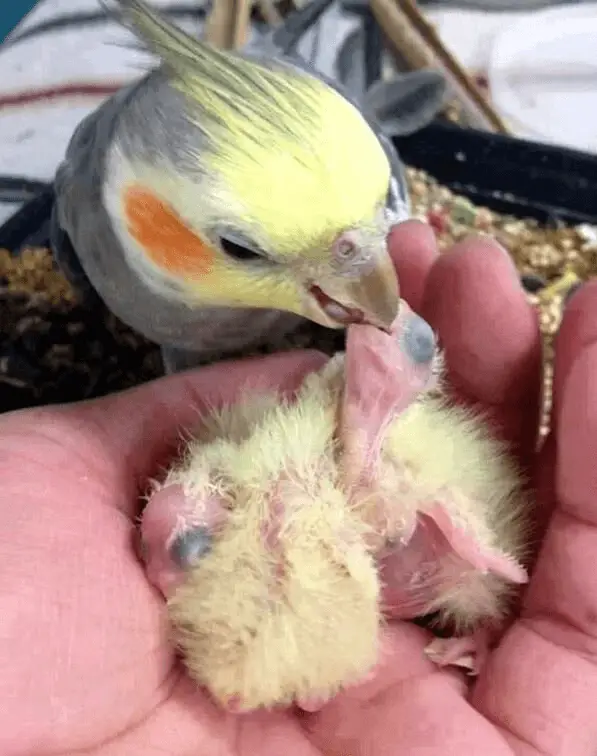
The feeding of the Cockatiel
The Cockatiel parakeet loves seeds. Mixtures of seeds sold in specialized stores will contain everything the Cockatiel needs.
Fruits and vegetables, especially green vegetables will provide him with all the vitamins necessary for his good health. If you can’t give him fruit, apple juice diluted in water can replace them.
However, parsley, avocado, beets, potatoes, garlic, shallots, mushrooms, and citrus fruits should be excluded.
You can supplement it with millet once or twice a week, as well as cuttlebones and mineral blocks to give it the calcium and minerals it will need.
He will also need fresh, clean water at will.
Cockatiel drawing
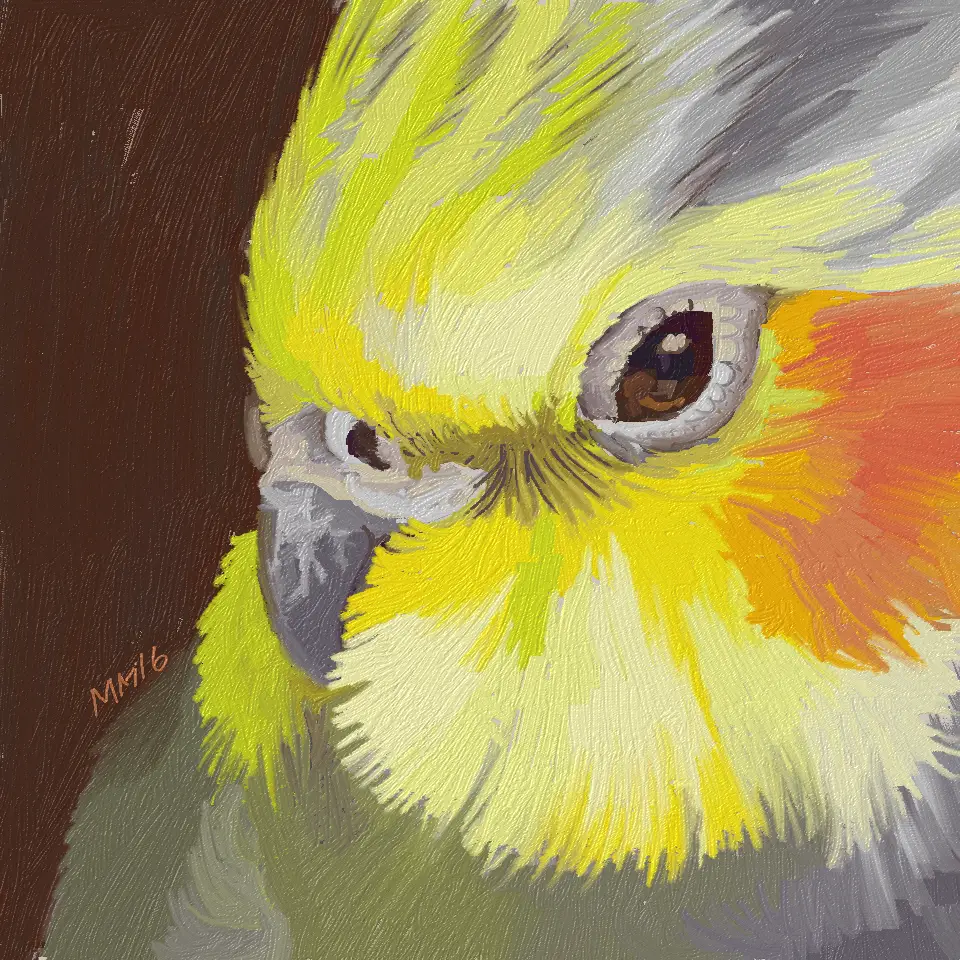
The Cockatiel parakeet: a sociable bird
When you adopt a cockatiel, you have two choices: choose a high “by hand” (EAM) or not.
The cockatiel raised by hand has been educated to be used to humans, and come easily to him, resting on a shoulder or an outstretched hand for example. They are obviously more expensive to buy, but it is also possible to raise your cockatiel yourself.
Raise a cockatiel
To raise its cockatiel, you will need to be patient. First, be aware that the younger the individual, the more receptive they will be to your approaches.
When you adopt your Cockatiel, give it time during the first week to get used to its new environment. Just give her food and drink and avoid stressing her out as much as possible.
The cockatiel: how to raise this bird at home?
Are you considering adopting a Cockatiel? This beautiful bird from the same family as the parrot is very sociable and loves to take part in family life. On the other hand, gaining your trust requires great patience and a lot of gentlenesses. Intelligent, curious, and playful, the Cockatiel has a beautiful gray and colorful plumage and a beautiful crust on the top of the head. Discover its secrets and learn how to breed it at home via this complete file!
The cockatiel: how to raise this bird at home?
The cockatiel (Nymphicus hollandicus) is a very intelligent, curious animal, close to humans, of the order Psittaciformes. Native to Australia, it measures 30 to 40 cm and weighs 80 to 150 g. In the wild, it lives in almost the whole country, except in the coastal zones, and likes as much in the pastures and the savannah as in town. She mainly lives in a group.
Gray in color, it has white bands on the wings, a yellow head, orange and red cheeks, and a magnificent crest on the top of the skull. On the other hand, the female does not present a yellow mask. A Cockatiel parakeet lives between 10 and 20 years on average.
Very sociable, the Calopsitte parakeet likes to observe and live with the inhabitants of the house, like a full member more than like a pet. She quickly becomes attached to the one who takes care of her and identifies strongly with her person. In addition, it is a very talkative, excellent whistler and noisy, which is why it is often not recommended in apartments or in families seeking calm.
The Cockatiel can live alone at home, but if you are away often, it is best to adopt at least a couple. This will help overcome boredom and especially depression because these animals are very supportive. On the other hand, avoid placing two males together or more males than females, as they risk clashing with each other to assert their superiority.

Cocktail bird
The Cockatiel can live alone at home
The cockatiel weird bird, quarrion needs a spacious cage to be fully happy. Very active, she likes to fly every day and spread her wings to stretch.
Equip the cage with toys and wooden perches because she loves to nibble and have fun. On the other hand, avoid mirrors that tend to panic or make him lose his head. As for perches, vary the sizes and diameters to avoid the risk of osteoarthritis of the legs.
Install a tub of warm water in the cage every day for the parakeet to bathe in. She likes to have fun in the water and use it for washing.
The cage must be installed in a living room, such as a living room. Indeed, the Cockatiel weiro bird, quarrion is very sociable and likes to observe and interact with those around it. If you isolate her, she will be unhappy and may become depressed.
You can leave it out every day in a secure and closed room, isolated from other animals, very young children, and various dangers.
Keep the cage clean by lining the bottom with newspaper to absorb the droppings. Wash the cage regularly (at least once a week) with warm water and black soap to disinfect it and prevent mites and other parasites from developing there.
His food
You can buy suitable seed mixes in stores or at pet stores. A true granivore, the parakeet loves seeds of all kinds and enjoys it.
Supplement his diet with fresh fruits and vegetables to provide him with maximum vitamins and minerals. Renew them every day to preserve their freshness. The cockatiel weiro bird, quarrion enjoys apples, pears, spinach, watercress, Swiss chard, cabbage leaves, and carrots in particular.
In addition, to supplement its calcium intake, give it once or twice a week a cuttlefish bone and millet.
Finally, consider providing it with clean, fresh water that you will renew every day.
How to train a cockatiel?
You can buy a cockatiel raised by hand, that is to say, used to live with the man, to rest on his shoulder or on his hand. Even if they are a little more expensive, these parakeets will be used to your presence more quickly.
However, you can still raise your parakeet yourself, as long as you are very patient and gentle. In this case, prefer to adopt a young individual who will be more attentive to you and receptive to your practices.
Always proceed gently so as not to uproot it brutally as soon as it arrives at your home. Leave her alone for several days to allow her to get used to her new home without stress, but think carefully
Cockatiels in the Aviary whistling and Singing | Cockatiel Sounds
SOURCE:Love of Pets
Are cockatiels easy to care for?
Cockatiels are easy to tame, very intelligent, and easy to handle inexpensive, and simple to maintain, and they are also easy to breed in captivity but you will need patience and time if you want to train your cockatiel right.
Is a cockatiel a good pet?
Absolutely, Cockatiels birds can be great first pets for new pet owners Cockatiels are affectionate pets and gentle and are also ideal for apartment living.
Do Cockatiels need a companion?
The cockatiel is sociable are companion birds In the wild, cockatiels live in flocks but if the Cockatiels are alone they will need a lot of attention from their owner’s, Cockatiels do not like being separated from their companions.
Are cockatiels easy to care for?
Cockatiels are simple to maintain and easy to tame, Caring for cockatiels is relatively easy and Cockatiels are the best pet birds for busy people who are low-maintenance birds.
Conclusion
With their lively personality, fun, affectionate, social, and charming side, it’s no wonder this little parrot is so popular in captivity.
for other information from cockatiel:

